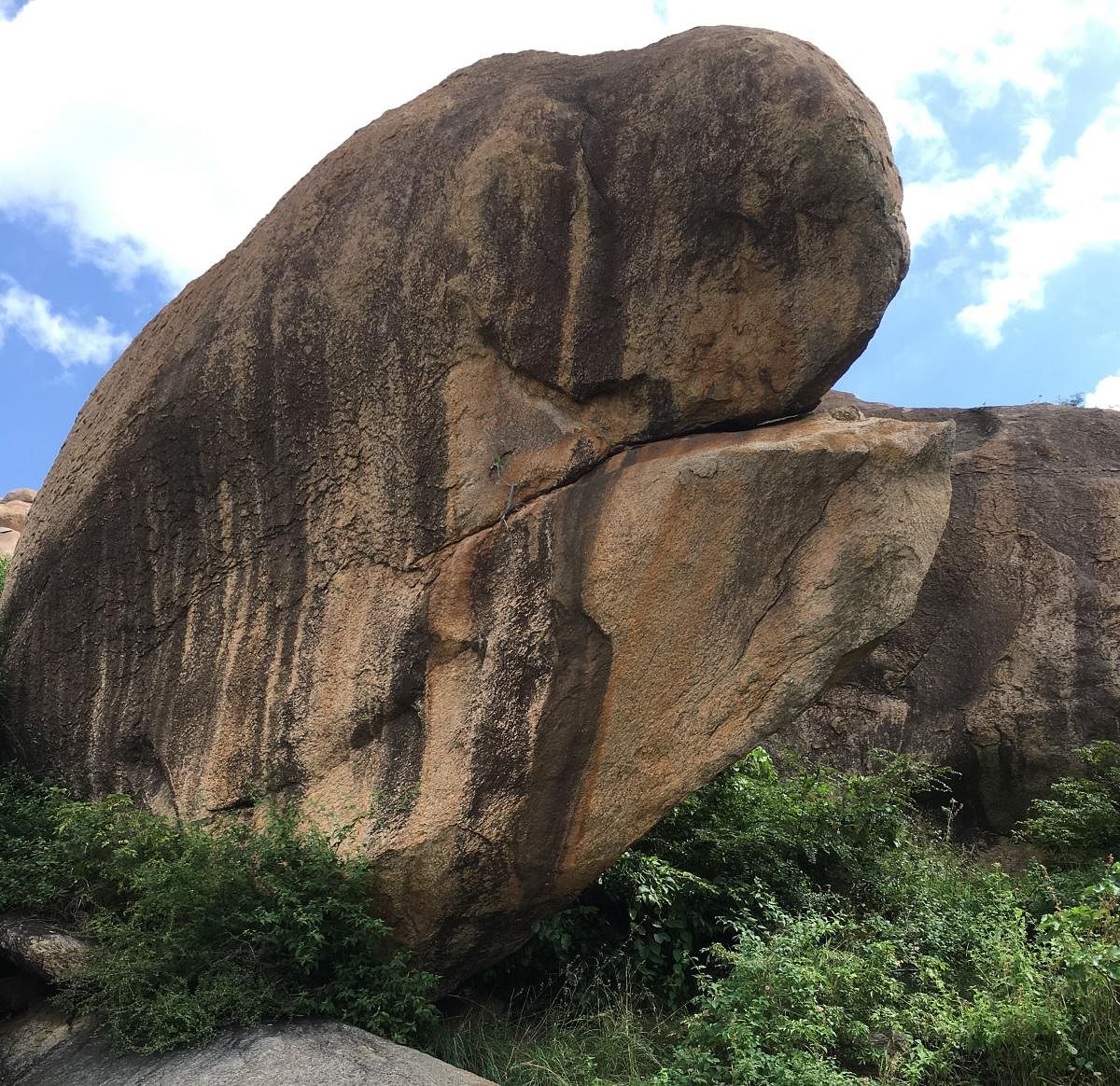History and myth pervade the trek up Kunti betta




The two rocky hills of Kunti betta stand out amidst a landscape of paddy and sugarcane fields, dotted with nodding coconut trees. These two hills with a nearby lake in Mandya’s Pandavapura taluk are popular with trekkers.
In the late 18th century, a regiment of French soldiers, which had come to aid Hyder Ali and Tipu Sultan in their war against the British were stationed here, giving the place its other name — the French rocks.
A regiment of the Madras infantry was also quartered in the Cantonment here until 1881, when it was given up as a military station.
French cemetery
An old French cemetery on the outskirts of Pandavapura has the tombs of military men of the old Madras regiment and other armies.
Most of these historical tombs have been vandalised by miscreants and are in a bad shape due to negligence. The headstones have disappeared, making it difficult to identify those buried.
However, a few of the men buried here have been identified and their details recorded. Engravings on eight of these tombs were in Telugu, one was in Tamil and the other in Tamil and Grantha characters.
Mythological past
The name Pandavapura also echoes a mythological past and is associated with the five Pandava princes of the Mahabharata.
The princes and their mother, Kunti, are said to have stayed here for some time during their exile. A stone pillar on top of the hill is said to be a pestle used by Kunti. The legendary stone pillar was recently reinstalled, after it was damaged by miscreants.
One of the temples here is also associated with her, while a pond formed from rainwater flowing down the hills is called ‘Kunti Kund’.
There are also legends associated with Bhima and Bakasura. The demon Bakasura is said to have been killed here. A giant footprint-like formation seen here is called ‘Bhimana Pada’ or the footprint of Bhima.
There are also temples dedicated to Mallikarjuna and Sri Rama and a few other small shrines in Kunti Betta.
A trekkers' hotspot
The summit of Kunti betta reaches around 900 metres. The trail is short, the ascent and descent are steep and a challenge to trekkers, as the hill is formed of giant boulders. But the effort is worth it, for the panoramic view the hill-top offers.
Besides greenery all around, the view of the opposite hill and the Thonnur lake, which is about 10 km away, is refreshing.
A unique feature of Kunti betta is that night trekking and camping is allowed here. A night out sitting near a campfire and a meal under the moonlit sky can be an unforgettable experience.
Apart from trekking, other adventure activities like rock climbing, rappelling, and camping are also undertaken here. The best time to visit Kunti betta is from October to May.
Pandavapura is about 30 km away from Mysuru and 150 km from Bengaluru.